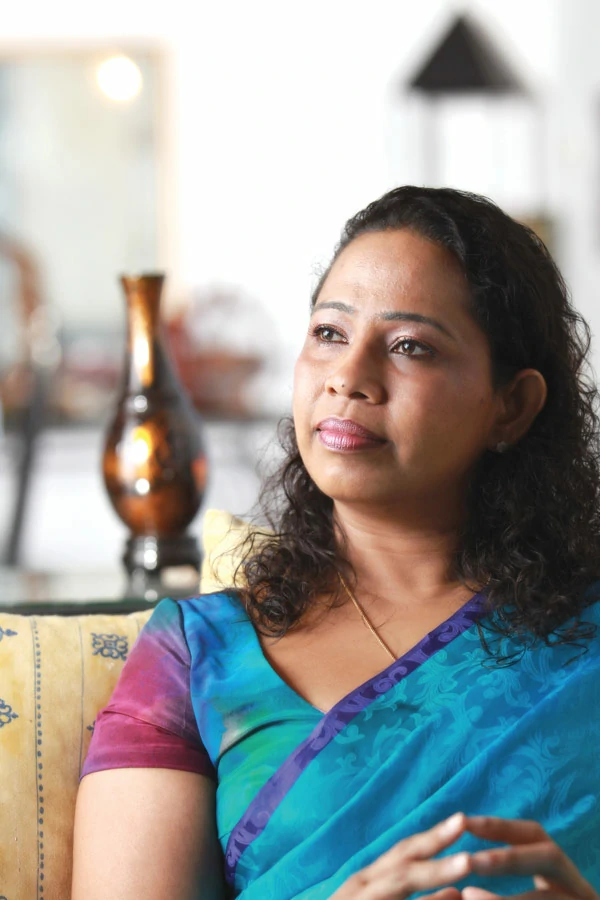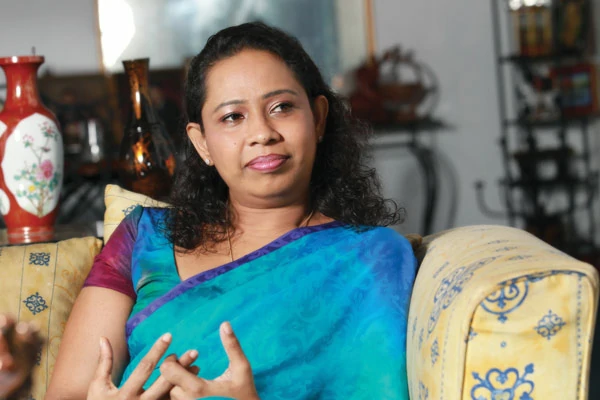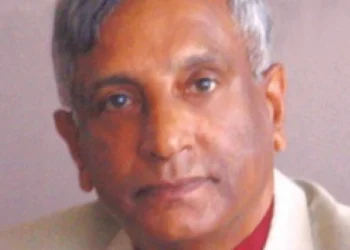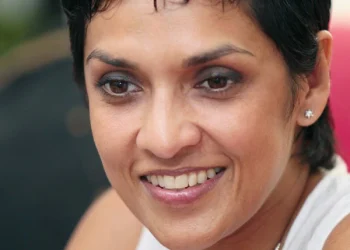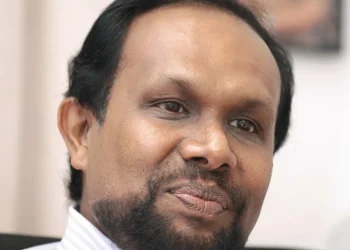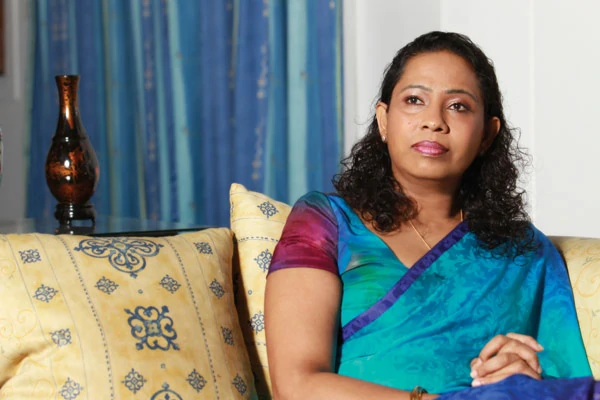
Sri Lanka is a country rich in history and culture. Our heritage spans more than 2,500 years and the remnants of that past are still evident in the archaeological sites that are dispersed all over the country. Our culture while changing with time is still pure at its core. The responsibility of safeguarding our national treasures and preserving our culture falls on the Ministry of National Heritage and Cultural Affairs, which is headed by the dynamic and progressive Minister Pavithra Wanniarachchi. In her discussion with Business Today, Minister Wanniarachchi spoke about the Ministry going beyond its traditional role to become a full-fledged partner in the surge forward to preserve our national pride and recognising the importance of developing in terms of economic, social and cultural spheres.
By Udeshi Amarasinghe
Photography by Menaka Aravinda and Mahesh Bandara
The Ministry of National Heritage and Cultural Affairs is in charge of all that is important to our Sri Lankan heritage and culture. As the new Minister, what are your plans to safeguard and promote these aspects?
At the time the Ministry of National Heritage and Cultural Affairs was assigned to me, the first thing I saw and felt was that it was a huge opportunity for me to fulfil my responsibilities to my motherland. I believe that the Ministry of National Heritage and Cultural Affairs is one of the most valuable sectors in the country. Economic development alone is not enough for the advancement of a country at a time where values of society are being disregarded. A country should develop not only in terms of the economy, but also socially and culturally. It is then that the State that President Mahinda Rajapaksa and the people of this country are aspiring to will materialise. We will be able to make Sri Lanka the most valuable country only if we develop in terms of economic, social and cultural spheres.
Our responsibility is to see how the Ministry of National Heritage and Cultural Affairs can contribute to economic development. That is our focus. In addition to identifying the individual responsibilities of each department and institute, the overall vision is how our Ministry can contribute to the development of our country, because, the three main factors – economic, social and cultural – cannot be separated into individual units, these are inherently entwined.
In 1977, the open economy was introduced to this country in a massive way. It went beyond what was suitable for the country and open economic policies were implemented throughout the economy. With the implementation of economic reforms, social and cultural aspects also changed. Thus these three are mutually bonded together. If we expect to develop the economy after a 30 year conflict, where economic reforms and policies are being introduced, whether we expect it or not, cultural changes will also take place in the country. The people of this country expect large scale economic development. There is immense hope and expectation for the country to become a developed country and as the Government we are forging ahead to achieve the economic targets so that we can fulfil the people’s expectations.
Our President always tells us that we should work towards achieving the economic targets. Therefore to fulfil this task we are always looking at how our Ministry can go beyond its traditional role of protecting artefacts and if development entails economic, social and cultural changes, then how the Ministry should facilitate this process. With the current surge in economic development, we need to see how to take the Ministry forward.
Ministry officials refer to conservation, protection and closures of valuable items. But what I always tell the officials – it could be the Archaeological Department, Archives Department, Cultural Affairs Department, Jana Kala Kendraya or the Tower Hall Foundation – is that, conservation or closure alone is not sufficient. Valuable items cannot be hidden and kept aside. If there is something that showcases our pride and history, then we have to take it to the world. We have to go beyond the traditional methods and use new technologies and appropriate mechanisms. Throughout the Ministry we aim to provide measures where these items are kept protected, but are not hidden from the public.
Archaeological sites are key to our tourism industry and hence to economic development. What is being done to promote these destinations?
Firstly, I have informed Ministry officials to document the sites that come within the purview of our Ministry. Recently, I met a tourist who had a list of places to see that had only the more known about sites such as Anuradhapura and Sigiriya. However our country has many archaeologically important sites, but the perception of the world is that we have only a few important sites.
Currently we have identified about 250,000 archaeological sites in Sri Lanka, excluding the North and East. After we list these, we will select the most important and the most attractive and take steps to develop them. For example, Deegavapi in the East – a kingdom of many acres, just like Anuradhapura, where there were temples and cities – has been buried underground with time. Thus with financial assistance from Bank of Ceylon and manpower from the Civil Defence Force, we have started a programme, to excavate and unearth the remains of the kingdom.
Our Ministry Can Contribute To The Development Of Our Country, Because, The Three Main Factors — Economic, Social And Cultural – Cannot Be Separated Into Individual Units, These Are Inherently Entwined.
There are many places in this country, such as Batadombalena, Ratnapura, where the remains of the most advanced prehistoric man in Asia, who lived over 40,000 years ago were found. Wrecks of ships, containing worthy treasures, that have travelled from far and wide can be found along the coast. We are currently looking into all these and also approaching the private sector for funds.
Large corporations allocate funds under their CSR projects, we are requesting them to join with the Ministry of National Heritage and Cultural Affairs to assist us to develop these sites. It could be just one site that they help us to develop, but they would be doing a great service for the country and the people will be grateful to these organisations.
The people of this country love the nation, they have a sense of nationhood. Therefore we are working together with private organisations to take the nation’s pride to the world. There is no place in this world in an area as little as our country with such numerous sites of cultural and archaeological significance.
Therefore by locating and unearthing these places, I wish to produce a new tourist map. If you go to any district, if we take for example Kurunegala there are four kingdoms. Plans have been put in place to revamp four of the kingdoms under the ‘Wayamba Chathurasraya’ just like the cultural triangle. This will be done according to the President’s wish. Even if you take Sabaragamuwa, the Central Province or the North and East, there are many places in each of these areas. We are working towards creating a new tourist map, featuring the places that have been newly unearthed to showcase to the country and to the world.
Destinations such as Anuradhapura, Polonnaruwa, Sigiriya and other such sites are where tourists are taken all the time. However, there are many more archaeological sites that should be developed and tourists should be encouraged to go. What is being done in this regard?
The Ministry of Tourism and the Ministry of National Heritage and Cultural Affairs are working very closely together. In most instances we hold discussions with them and assess their needs as well. Therefore in the future there will be many programmes where both Ministries will work together.
For example, the Jana Kala Kendraya in Battaramulla is a place that has been cast aside. But, if a foreigner comes to Sri Lanka, they would stay the first couple of nights in Colombo. They need to see the places and experience our culture during those couple of days – maybe it’s the religious activities of our people, the way they worship, thovil, shanthi karma, our intangible heritages, it can be pirith, indigenous medicine methods, carvings, puppetry, religious rituals or cooking methods – these are what the tourist should be able to experience. But, currently, tourists do not have anything to do on their first couple of days. What they experience is the same things they will experience in a five star or seven star hotel in their country. There is no place in Colombo for them to see or experience our culture. Therefore, I hope to create a place such as the Jana Kala Kendraya, where this could be the first stop for the visitors who stay in Colombo – to see our folk songs and traditional dances, whether it is up country, low country or Tamil dances – to give them a chance to view, experience and to understand our country’s traditions.
Miniature carvings of the Samadhi Statue, the Gal Viharaya Statue in Polonnaruwa and other such artefacts are recreated as ornaments at the Anura Nikethanaya by skilled craftsmen. This is located on the Gampaha – Kandy road. There is no proper place in Sri Lanka where you can buy such creations. Our aim is to develop the Anura Nikethanaya. This will be done in partnership with the Ministry of Tourism. There are many things that need to be done in this regard, planning is needed and we are looking into all these aspects. Local and foreign tourists can take these as souvenirs to their homes and remember their holiday.
The Ministry Of Tourism And The Ministry Of National Heritage And Cultural Affairs Are Working Very Closely Together. In Most Instances We Hold Discussions With Them And Assess Their Needs As Well.
The Ministry is focusing on the protection of historical sites in the North and East, can you tell us a little about this?
We have started archaeological digs and conservation activities of places in the North and East. If we take the information available up to now, there are many sites of religious significance to all faiths. In addition to these, forts built by the Portuguese and Dutch are there around the country. We have started conserving the Jaffna fort and improving these together with the government of Netherlands.
This is a multi-ethnic, multi-religious country. The Ministry of National Heritage and Cultural Affairs is not something that only protects Sinhala and Buddhist sites. We respect every religion, every nationality and every language and conserve all cultural and archaeological sites.
We hope to propose a route that follows historic and religious sites. For example, the route consisting of Deegavapi, Seruawila, Mahiyanganaya across Kandy to Siripada. It is a route where many activities of historic and cultural significance to the country have taken place. Therefore, we have proposed to name that route a national heritage. Similar activities are also being conducted in the North and East.
I have advised the Ministry, to list the number of cultural festivals in our country. As far as I understand there is a cultural festival every day in Sri Lanka. It can be the Poson festival, Vesak festival, Nallur Kovil festival, Wellawatte Kathiresan Kovil Perahera, Seenigama Devala Perahera, Kandy Perahera, Saman Devala Perahera, Kataragama Perahera, Deepavali, Ramadan and Galle Festival. We have to create a festival for each day. We should have 52 cultural festivals for the 52 weeks. Therefore, we have to list these and give it to tourists so that they are informed and they will travel to these locations during the festivals. This will generate income throughout the country. That is our aim.
I have also initiated the documentation of the country’s intangible culture. Otherwise, after this generation we would not be able to find any information. It can be religious or cooking methods. In Kelaniya University there is a programme that teaches Buddhist Ayurveda methods. Foreign students come here to learn how they could completely cure a person both spiritually and through Ayurveda methods. We have started to document such information.
This is essential for the future. The future generation is not aware of these things. I have worked in the paddy field, but my children have not. Therefore, I believe that it is the responsibility of the Ministry of National Heritage and Cultural Affairs to document these. That is why with assistance from UNESCO that I have taken this initiative.
If you take the Colombo National Museum, since recent times, it is open till evening. What is being done to promote and increase the number of visitors?
Together with HSBC we are taking the Colombo National Museum to a high exhibition standard. HSBC contributed Rs 35 million to refurbish the Museum as a CSR initiative. Furthermore the Museum is open daily including holidays. Similarly, it is open till evening. We have taken steps to open a good restaurant within two or three months, because the Museum is a place where you have to spend a lot of time. Therefore, providing a place to eat and have tea or coffee and sanitary facilities are necessary.
Museum culture is not prevalent in our country. If you take the number of visitors to Sigiriya, 60 percent of foreign tourists visit the museum. But, of the locals, only 30 percent go. We have been informed to change the way the tickets are issued, and also change the road leading to the Museum, so that more would visit. We have to create a state of mind in our country to visit Museums. We have also asked for funds from the Government to develop a large number of museums in the country.
I am very thankful to the President who advised Dr Jayasundera, Secretary of the Ministry of Finance to provide the necessary funds for the Cultural Ministry. In turn the Secretary asked me to inform him of the funds needed. Therefore, it is a blessing for the country that we have a leader who thinks of the country’s culture and has given importance to it, to protect what is ours. I believe, in Sri Lanka this is the first time that a national leader has directed the Ministry of Finance to allocate equal importance and also funds to the Ministry of National Heritage and Cultural Affairs as they do for other activities.
I Have Also Initiated The Documentation Of The Country’s Intangible Culture. Otherwise, After This Generation We Would Not Be Able To Find Any Information.
Our President is someone who thinks about the country in a very different way. Therefore, he assigned this Ministry to me and said that this Ministry has great responsibility. From that day on, we have worked hard till late in the night to achieve progress. I believe, we need to manage all the physical and human resources we have. We have to look at everything in a modern way, manage these resources, meet our responsibilities and become a powerful Ministry in the future.
The National Archives is a treasure that houses the entire history of our nation. However, it is not utilised to its full potential. How can the national archives be included in the economic process and have any plans been made in this regard?
The National Archives has in its possession valuable, historical documents. If someone in the private sector possesses a valuable document, that is of value to the country and if it is a historic document, the National Archives can preserve it with no cost. But, I do not know if people know this. Some houses have paintings that are of high value. They might be hundreds of years old. We can preserve these free of charge.
We are committed to preserving such documents, and we are capable of doing so. Some of the most important historical documents in Sri Lanka might be found in a person’s home, but they might have placed these in some bag or box. They would not have taken proper steps to protect these documents, or would not ask if there is a place in the country that will do it free of charge. They would even throw it away. But, these might be important for the country.
That is not all, we preserve all newspapers printed every day. If a newspaper has ten editions per day we will preserve all the editions. Likewise, we preserve every important document in Sri Lanka. Everyone can come and use the resources. If anybody wants to see what is written in the diary of the Jaffna Divisional Secretary during the days of colonial rule they can do so because we have the document at the National Archives.
We are preserving documents using modern methods. We do this together with the government of Netherlands. Therefore, for most of the people in Sri Lanka – our wedamahathayas, the monks – I invite them, if they write to us saying they want to preserve the palm leaf manuscripts, we can preserve them in a way that it won’t be destroyed.
Again, in this instance, as well as with the Museum new technologies need to be introduced and systems have to be upgraded. Is the Ministry looking into these aspects?
New technologies are used at the National Archives in preservation and conservation. We are currently designing policies to obtain foreign funds to introduce modern technologies to the Museum and bring it up to the modern standards.
Looking at the cultural aspects, many new projects are underway such as the National Performing Arts Theatre, Colombo and Kala Nikethanayaka in Kundasala, what is the progress of these projects?
The National Performing Arts Theatre will be handed over to us by the Chinese government by January 2011. At the time I was appointed as Minister, much of the work had already been done. But, there are some practical issues. I feel that the number of seats is not sufficient for the amount spent. There are only 1,200 seats. If the number of seats is increased, at least, to about 2,000 seats, when there is a performance, the money spent will be divided on the number of seats, which will reduce the ticket prices.
The Kala Nikethanaya is being built in Kundasale, in accordance with the Mahinda Chinthana, with money obtained from Sri Lanka. It is a place for artistes to hold their performances. For example, let us think that it is for someone who is practicing a drama. Such a person will hold the light and sound rehearsal the day before the performance. But then, they cannot get the desired effect, because it is only the day before that they get the facility to use the hall and practice. Therefore, the President decided to build a place for artistes with all these facilities – sounds, lights, a place where they can do rehearsals and can even stay overnight, write books or produce music videos.
When I went, I felt that the building was being constructed without consulting the artistes. Eventually, the building has to be constructed in a way that it is of use to the people who will use the building. Therefore, I held a meeting with all the Directors in Sri Lanka in this field, and informed them that we have begun such a project about two years ago and asked them what they hoped to gain out of something like this. They noted that this was the first time that a Cultural Minister has had such a discussion with them.
We Need To First Ask The People In The Industry What They Want And Then Design…It Is Essential That We Always Discuss With The People And Meet Their Needs.
We need to first ask the people in the industry what they want and then design. It is better than us constructing a building and then afterwards giving it to the person to design. It is essential that we always discuss with the people and meet their needs. What they wanted was to build one good experimental theatre, with smaller halls so that a few groups can go there, stay and practice.
The President wanted us to develop Mahamewuna Uyana and beautify it, while preserving the heritage. I was given this task to be performed within a month. Initial steps have been taken. I will also be going to Anuradhapura, because we need to get the input of the people involved. It is in Mahamewuna Uyana that you find Sri Maha Bodhiya, Ruwanweliseya, Thuparamaya, Jethawanaya, Abhayagiriya and Isurumuniya. We need to ensure that it is a serene and peaceful place, but at the same time, it has to be equipped with the necessary facilities. It is those people who will have a better knowledge of the place. It is only after listening to them and going for public meetings that we have to make our designs. We do not know at what time it is crowded – whether it is in the morning, afternoon or evening – whether visitors come in lorries, or buses or where to build car parks.
This is one of the major drawbacks we have in the country. When work is done without discussing with the relevant people and those involved, the decisions taken are not practical at times. For instance, we know that in the Western province, a place was built for artistes for their training and practice. But, now that place has been given to a private channel. It was not of any use to the artistes. We have to work together with the relevant people otherwise, they will not be able to make complete use of the facilities.
If we talk a little about you, how did you enter politics?
I am from Palmadulla, a village in Ratnapura. My father was a good person and a good leader, he earned money through his own hard work. My father was in parliament from the 1960s. He earned even when he had lost the elections, from 1977 to 1994.
We were brought up in a religious home environment, and are used to a very basic lifestyle. What we learnt at home was that whatever we did, was on behalf of the people, on behalf of others. In the mornings, my father puts some money into his pocket and it was his habit to distribute this among the people. He taught me that if you do not sacrifice your life on behalf of the people and country, there is no meaning in life and that you will be happy only if you help somebody. When you enter politics, there is a bigger opportunity of helping people. Thus, I entered politics because of what my father said. My father was an owner of a tea factory and also a gem businessman. He paved the way for the family to earn some money.
I entered politics, and have been doing everything honestly. I have not taken any money from anyone even for elections. Therefore, my hands are very clean. I am an extremely clean personality in politics. I take correct decisions, and rightly lead people without misleading them. I believe, thousands of people in Ratnapura will always vote for me. In most of the elections, I have come first or second. The people of Ratnapura like me, especially, because I love the people. They know that if they have a problem there is someone who is willing to address them on their behalf. Throughout history, we have honestly conducted our activities in politics. Therefore, the people of Ratnapura will never leave me, or allow me to lose.
I was always taught to work on behalf of the people. I remember, when I was small, our house was always crowded. My mother used to go to the pola on Saturdays and bring vegetables to fill half a lorry. That was to feed those who came to our house. In my younger days, my father sent me to the village school Gankanda Madhya Maha Vidyalaya. It was only after he lost that he put me into a Colombo school. He often said that people might think he is sending the children to schools in Colombo. I was trained to lead a very basic life where we made sacrifices on behalf of the people. Now there is no alternative other than taking this lifestyle forward and doing politics this way.
Can you tell us about your tenure as the Minister of Samurdhi and also Youth Affairs?
I believe the President places a lot of trust in me. He put me in charge of the Samurdhi Ministry and allocated a large sum of money for the Samurdhi Ministry for rural development. The President allocated additional funds so that the necessary work could be done. I was able to transform this Ministry and we did a large amount of work to address the needs of the poor and uplift their lives.
Then at the Ministry of Youth Affairs, initially only Rs 45 million was allocated for the Youth Services Council. The President increased that amount to Rs 450 million. Thus, compared to the condition of those Ministries at that time, I was able to bring these to a higher standard.
At the Youth Affairs Ministry we restarted several activities such as the Youth Sports Festival, the Youth Drama Festival and the Youth Societies Convention. We started Drama Schools around Sri Lanka. I remember the Batticaloa Dance School was among the 12 best dancing groups in Sri Lanka. Even though the Youth Drama Awards Festival (Tharuna Natya Sammana Ulela) was conducted, it mainly focused on the drama groups in Colombo. We made it compulsory to hold competitions at the provincial and district levels in Sri Lanka.
My Father Taught Me That If You Do Not Sacrifice Your Life On Behalf Of The People There Is No Meaning In Life…I Entered Politics, And Have Been Doing Everything Honestly… My Hands Are Very Clean.
I also started the programme ‘Rata Dinawana Wishishtayo’. We found out that although about 60 percent of youth were given vocational training, they did not have jobs because they could not speak English and their computer knowledge was poor. Therefore, if these aspects are developed, there are many employment opportunities in the country. We conducted English language and computer courses for these youth on Saturdays, Sundays and on evenings. In the mornings, we conducted several programmes. For example, for two weeks, we gave them army training. Then for the next two weeks, we gave them the chance to go to an archaeological site and work so that national pride will be instilled in them. They also worked at environmentally friendly sites and in farms. A syllabus was designed after discussions with the Education Ministry. Then, for six months, we trained them on how to conduct themselves at a work place, especially, at their first job. In the meantime, we wanted to make sure that the students who come out of the school are dutiful, environmentally conscious and patriotic – that is the kind of society we want to build.
I remember at the Youth Sports Festival, the Mannar Football team and the Hambantota team came into the final. This was a good experience for those youth who came from the North. We invited youth from the North and East for our New Year celebrations. It was with great difficulty that we brought them. There were security concerns. We got permission from the Defence Secretary. We were able to work together with those youth. After the war was over, we went to those camps in the North with the youth from the South who had received vocational training from us to help them. We held competitions for those who could sing and dance. These were experiences that they were not used to. We brought them to Colombo and held shows. This was one of the greatest experiences in my life.
The Ministry of National Heritage and Cultural Affairs is inherently linked with the economy of this country. As such how are you working with the Ministry of Economic Development?
The Cultural Ministry will be working very closely with the Ministry of Economic Development in the long term. Basil Rajapaksa, Minister of Economic Development, has given us his support and has allocated large sums for this Ministry. His assistance to us has been of immense importance.
I am happy that the people of the country have taken a correct decision. When my father and I came to the Parliament in 2000, if decisions were made, or if someone said that a place should not be given to Pavithra Wanniarachchi because her father is also in parliament, that would be a childish argument, because I entered parliament by obtaining the votes of the people. Minister Basil Rajapaksa secured over 400,000 votes from the people of Gampaha. The message they were trying to give through that was to create a place for someone who can work for the country.
He is truly an intelligent person who can work for the development of the country. I am happy that he was given such an important Ministry as that of Economic Development. We received immense strength through this. It is a way of meeting the hopes of the people. I remember, at one time Sirimavo Bandaranaike was the Prime Minister, Chandrika Kumaratunga was the President and Anura Bandaranaike was the Speaker. There were occasions like that. We are grateful for appointing Basil Rajapaksa as the Minister. He is a pillar of strength for us to achieve our goal, and to take the development of the country forward.
The people of this country elected a leader such as President Mahinda Rajapaksa, who has national pride. My duty is to be conscious of these expectations, and lead the Ministry to great heights.
Final thoughts.
I am especially grateful to the President for the trust he placed on me. This Ministry was to be assigned to a young leader of a party, however it was finally assigned to me. One third of the country comes under the purview of the Ministry of National Heritage and Cultural Affairs. The President understood this. I am happy that the President placed such trust in me.
Even though reconstruction of religious and cultural sites have been done in the past, I am happy that the core of our culture was not harmed. Certain differences are seen in the cultural values, but the core such as the relationships we have within the family have not changed. That is why, the people of this country elected a leader such as President Mahinda Rajapaksa, who has national pride. My duty is to be conscious of these expectations, and lead the Ministry to great heights
The People Of This Country Elected A Leader Such As President Mahinda Rajapaksa, Who Has National Pride. My Duty Is To Be Conscious Of These Expectations, And Lead The Ministry To Great Heights.
